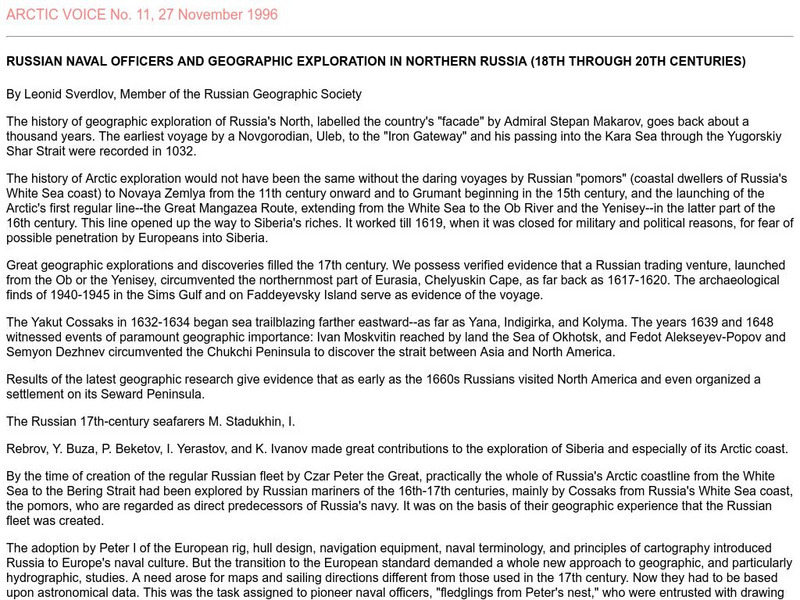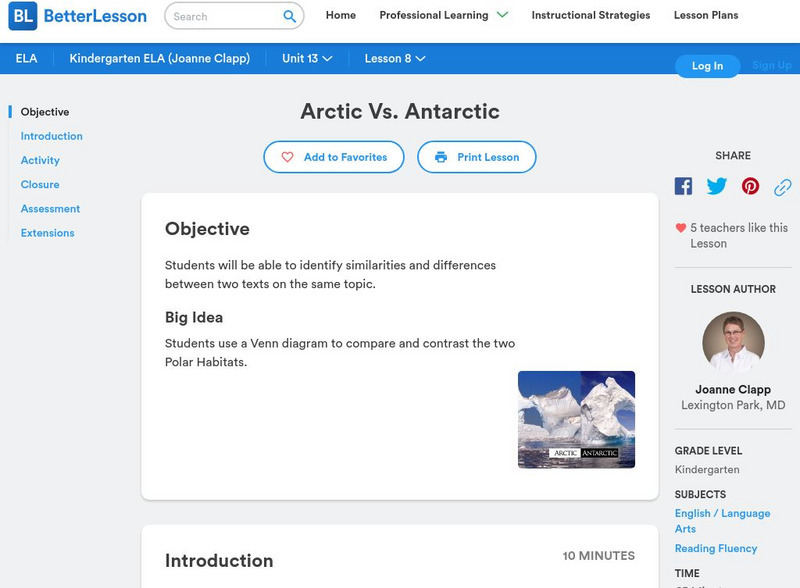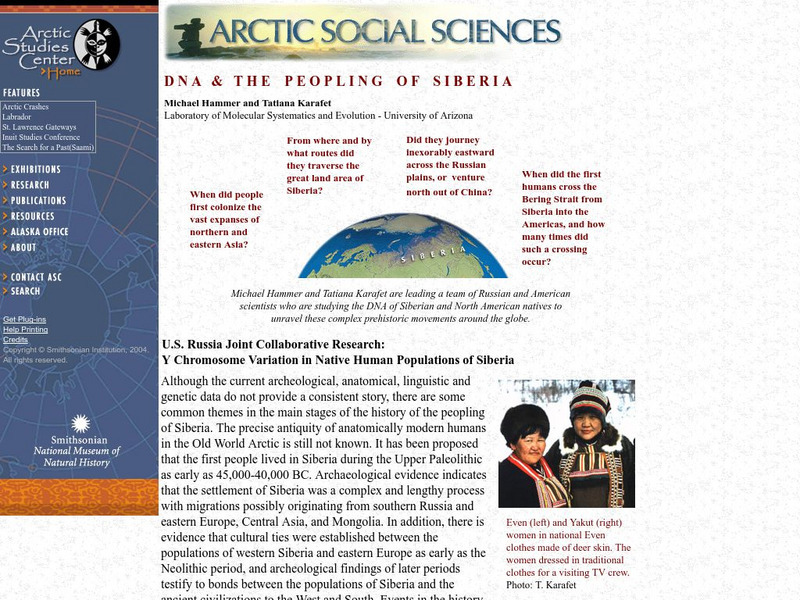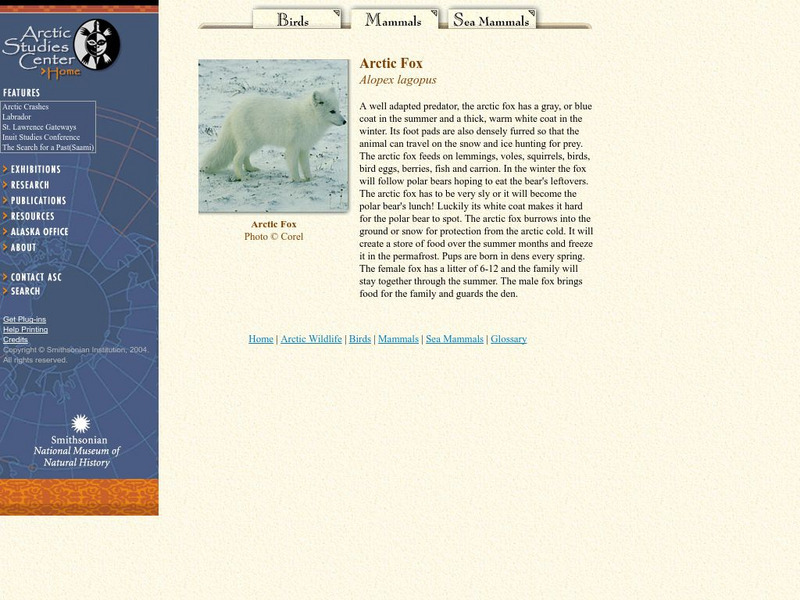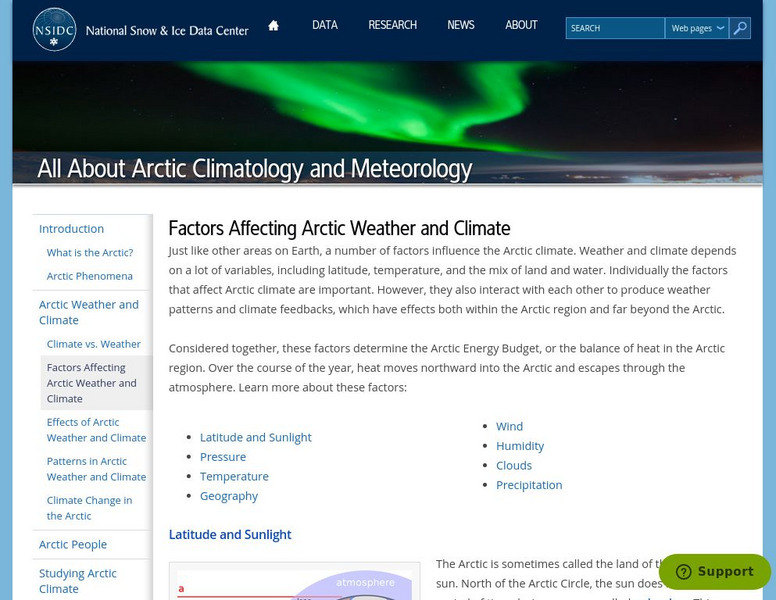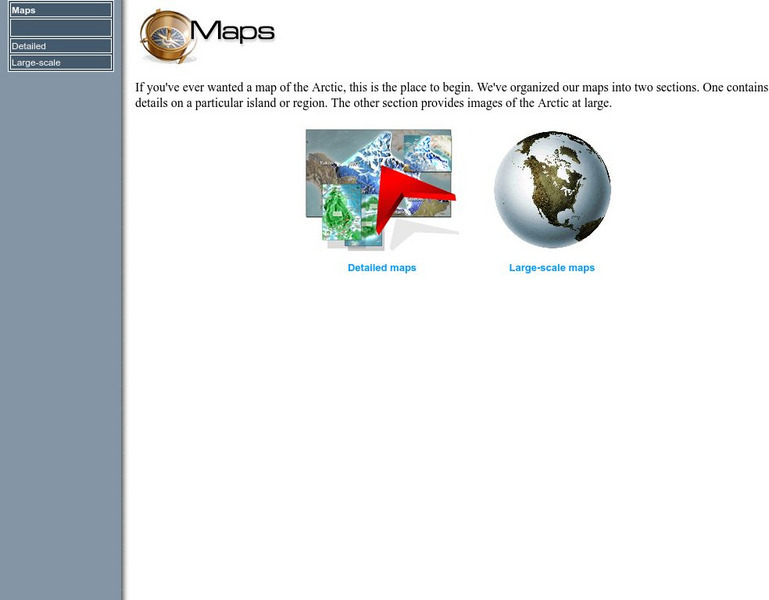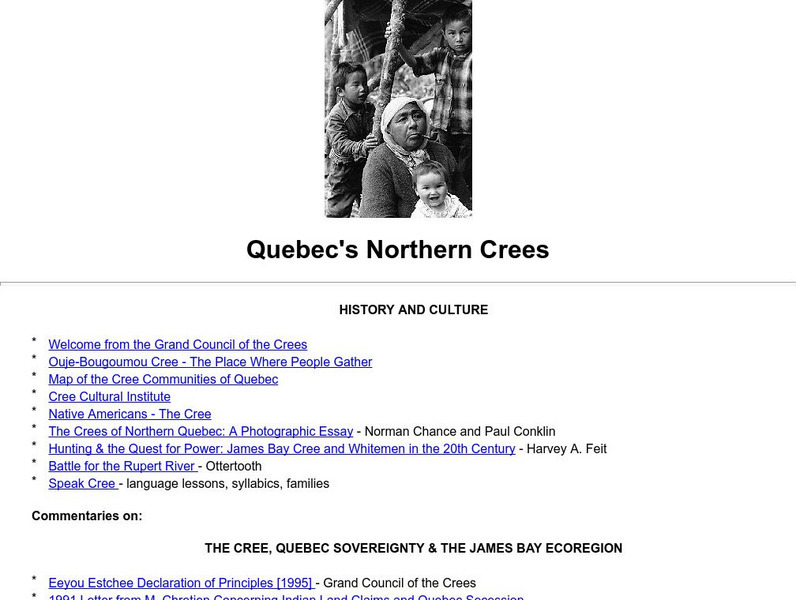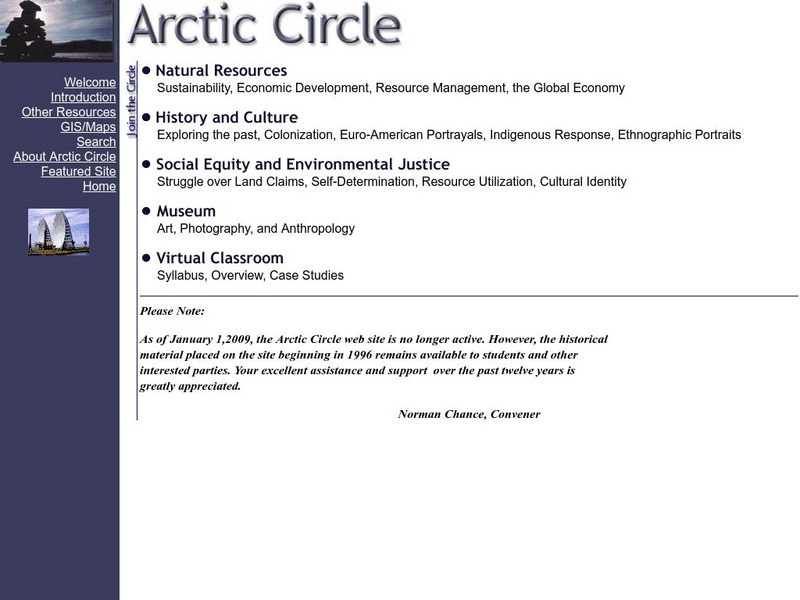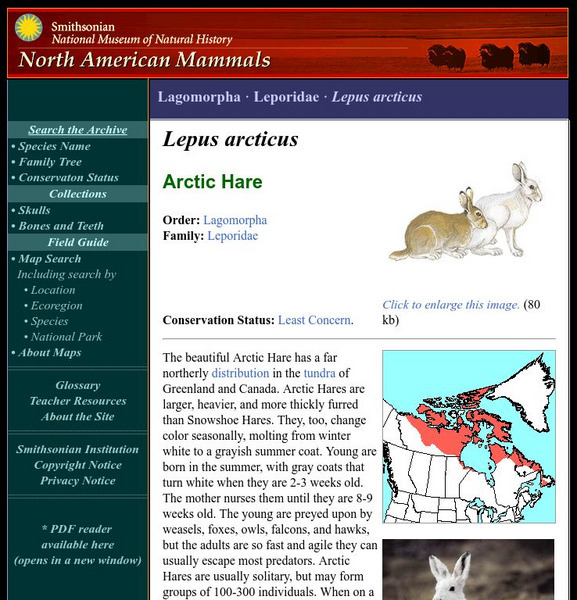McGill University
Mc Gill University: Canadian Biodiversity: Ecozones: Arctic Archipelago Marine
The Arctic Archipelago Marine ecozone includes Hudson Bay and most of the water surrounding the islands of Nunavut and the Northwest Territories. This is a brief, concise description of the location, climate, geology, and flora and...
Hartford Web Publishing
World History Archives: Arctic Climate Changing Rapidly
This article from the Environmental News Service gives evidence of global warming in the Arctic region.
Other
Arctic Voice: Geographic Exploration in Northern Russia (18Th Through 20th C)
An interesting article about the exploration and mapping of the Russian Arctic and the men who were involved. The mapping process evolved over several centuries.
Other
Polar Continental Shelf Project for Kids!
Visit this resource to learn about the geography, wild life, plants and people of Polar Continental Shelf in Canada's Arctic. Students can take a quiz to see how much they have learned.
Better Lesson
Better Lesson: Arctic vs. Antarctic
Students will be able to identify similarities and differences between two texts about the polar habitats by using a Venn diagram. Included in this lesson are guided questions to use while reading, a printable Venn Diagram, and pictures...
Smithsonian Institution
National Museum of Natural History: Arctic Science: Dna and the Peopling of Siberia
Scientists from the University of Arizona are conducting Y chromosome research on native Siberians to try to determine whether there is a genetic affinity to North American native people. The rationale and direction of this research are...
Smithsonian Institution
National Museum of Natural History: Arctic Studies Center: Arctic Fox
This site takes a brief look at the Arctic Fox, focusing on this animal's adaptations to the harsh climate of its environment.
National Snow and Ice Data Center
National Snow and Ice Data Center: Factors Affecting Arctic Weather and Climate
An introduction to the factors that affect the Arctic's weather and climate: latitude, land/sea distribution, solar radiation, air temperature, air pressure, winds, humidity, clouds, and precipitation.
Exploratorium
Exploratorium: Ice Stories: Arctic Seals
The Arctic is home to several unique-and uniquely beautiful-seal species: ribbon seals, bearded seals, ringed seals, spotted seals, harp seals, and hooded seals. These Arctic species are called ice seals because they spend the bulk of...
Cornell University
Cornell University: Tropic of Cancer, Tropic of Capricorn, Arctic Circle, & Antarctic Circle
Students examine the Tropic of Cancer, Tropic of Capricorn, Arctic Circle, and Antarctic Circle. Related questions are included.
Other
Arctic National Wildlife Refuge
A truly beautiful photo of the Refuge awaits you when you open this site. The US Fish and Wildlife Service of Alaska provides thorough information on the wildlife, the landforms, and beauty of the Refuge. Students will also find notes on...
National Science Foundation
National Science Foundation: Arctic & Antarctic
The National Science Foundation has conducted extensive research on this region that is often thought of as barren and devoid of all scientific promise. Learn more about these frigid regions and what is being done to understand more...
Other
Arctic Circle: Quebec's Northern Crees
This page provides links to articles and resources on the history, culture and current circumstances of the Crees of Northern Quebec.
Other
University of Connecticut: Arctic Circle
This site offers student information on natural resources, history and culture, social equity and environmental justice, anthropology, a virtual classroom and an arctic forum.
Other
Canada to Fortify Arctic Sovereignty With New Icebreakers
Due to global warming, the Northwest Passage may be open for large parts of summer, therefore, allowing improved ship access. Canada is building the new Polar Class 4 Arctic offshore patrol boats to conduct sea-borne surveillance...
Smithsonian Institution
National Museum of Natural History: American Mammals: Arctic Hare
The beautiful Arctic Hare has a far northerly distribution in the tundra of Greenland and Canada. Arctic Hares are larger, heavier, and more thickly furred than Snowshoe Hares. Learn more about the Lepus arcticus, more commonly known as...
Canadian Museum of Nature
Canadian Museum of Nature: Arctic Wolf
The Arctic wolf is native to the Canadian Arctic. Information and pictures are found on this animal facts page.
Smithsonian Institution
National Museum of Natural History: American Mammals: Arctic Fox
An animal that does not begin to shiver until temperatures reach -70 C, the arctic fox is one of the most superbly cold-adapted mammals. Its dense, multi-layered coat, which is several inches thick during winter, provides excellent heat...
Smithsonian Institution
National Museum of Natural History: American Mammals: Arctic Shrew
Arctic Shrews prefer grassy clearings and marshes within coniferous forests and are never very dense in population. Mortality is high early in life. Learn more about the Sorex arcticus, more commonly known as an Arctic Shrew, in this...
Smithsonian Institution
National Museum of Natural History: American Mammals: Arctic Ground Squirrel
Arctic Ground Squirrels must cope with a harsh environment that offers long, cold winters, strong winds, a short growing season, permafrost, poor drainage, and limited cover. The squirrels are, by necessity, dormant for seven months each...
Other
Arctic Natives, Wildlife Threatened by Pollution
An article about the industrial chemicals and pesticides that are threatening life in the Arctic. Explains which species are more vulnerable to the pollutants.
Ducksters
Ducksters: Geography for Kids: The Arctic and the North Pole
Learn about the North Pole and the Arctic on this website.
Other popular searches
- Arctic Animals
- Arctic Food Chain
- Arctic Ocean
- Arctic Ocean Diorama
- Preschool Arctic Animals
- Arctic Plants and Animals
- Arctic Region
- Arctic Circle
- Arctic Hare
- Arctic Peoples
- Arctic Predators
- Global Climate Change Arctic




